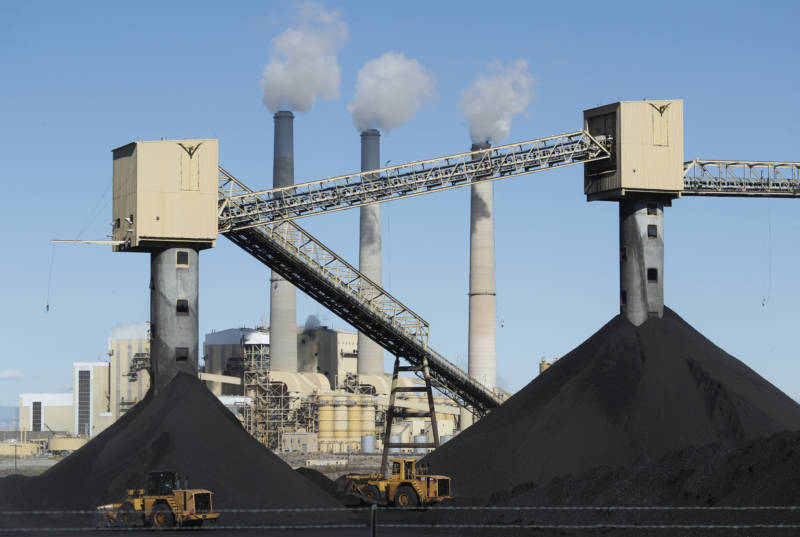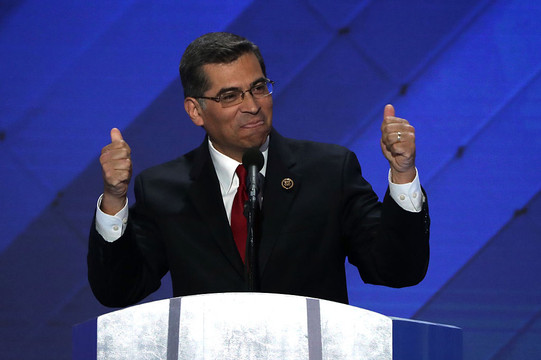Last week, the Trump Administration weakened the Endangered Species Act with the broadest changes to the bedrock environmental law in decades.
Atty. Gen. Becerra: It Does Seem Like You're Fighting Trump's Environmental Policy At Every Turn

The Trump administration’s new rules make it harder to consider the future impacts of climate change when officials consider whether a species is threatened and should be placed on the endangered species list. It also introduces a factor the existing law never did, intended to calculate the economic impact of protecting a species. Indeed, the Endangered Species Act had expressly forbidden agencies from taking economic considerations into account.
During a call with reporters, California Attorney General Xavier Becerra promised he’d take the federal government to court over this. He added that California goes to court against the Trump administration only when state officials deem it “necessary.”
While Becerra may not sue over each of Trump’s actions, it certainly seems that way.
Less than 24 hours after he promised legal action over endangered species, Becerra gathered reporters again to announce that California is suing the Trump administration over another environmental law, a rollback of Obama-era rules to reduce pollution from power plants.
The latest suit over the Clean Power Plan raises to 27 the number of times that Becerra has sued the Trump administration over an environmental issue. A tracker by the nonprofit, nonpartisan news site CalMatters keeps a running tally. That’s almost as many as all other lawsuits he’s filed against the administration, at least 29 in total, on subjects ranging from immigration to health care.

Obama’s policy mandated that states curb pollution from power plants and aimed to reduce U.S. power sector emissions 32 percent below 2005 levels by 2030, but it also allowed states to carve out their own plans.
Trump’s EPA Administrator Andrew Wheeler often criticized the Obama policy, saying it would require Americans pay more for energy. Under his plan, the Affordable Clean Energy rule, the agency will still regulate emissions by drastically lowering the bar to about a percent by 2030.
Here are top takeaways about how the new federal policies will affect California.
Scientists Are Concerned About Biodiversity and Climate Change
The media focus lots of attention on megafauna— the grizzlies, the bald eagles, the California condor. But in this state, more plants are threatened than animals. And many scientists say their main concern is biodiversity; California has more endangered species than any state except Hawaii.
In Northern California’s old growth forests, for example, the redwoods and Douglas fir are habitat for a lot of threatened critters. Their threatened status extends protections to the ecosystem.
On the Central Coast, specific manzanita face pressures from wildfire. So the use of climate data becomes very important in accurate analyses of the trees’ status and the threats to them.
In a complete change from the existing law, the Trump administration proposes that agencies conduct economic analyses and release them to the public. At the same time, the administration’s proposal says agencies won’t use that analysis in determining whether to list a species.
How Will the New Rules Affect California?
California maintains strong environmental laws, but animals don’t care about state boundaries.
The endangered grey wolf, for example, walked into California from Oregon. Laws in California protect the wolf, but the animal loses those protections if it walks into another state.
Similarly, California’s strong emissions laws known as the Clean Power Plan don’t extend into other states. This state is part of a regional grid system, and coal-burning plants operate in neighboring Nevada and Arizona.
About half of California’s land is public. Some of it is managed by the Federal Bureau of Land Management or the Forest Service. The military manages others — Camp Pendleton and China Lake Naval Air Station, for example. An endangered species doesn’t know whether it’s on military, state or private land.
How a New State Law Might Cover the Gap
Becerra promised that California would push back against federal environmental deregulation through any and all means.
The California Legislature is considering a bill, SB 1, under which any federal environmental or worker safety standard in place and effective when President Trump took office would remain enforceable under California law.
The bill in the Assembly Appropriations Committee would apply to the Clean Power Plan and the Endangered Species Act. It has passed out of the Senate and must move out of the committee by August 30.
Why All the Lawsuits Now?
The upcoming presidential election is the reason for the rapid-fire pace of the lawsuits. The Trump administration wants to see all of these legal questions answered by 2021.
If the Democrats beat Trump, the new president may reverse the executive orders. If Trump wins, the administration wants to begin its second term with the legal disputes settled.
The lawsuits over the Endangered Species Act and the Clean Power Plan are going to be heard either by the U.S. Supreme Court or by a panel of judges at the D.C. Circuit Court.
